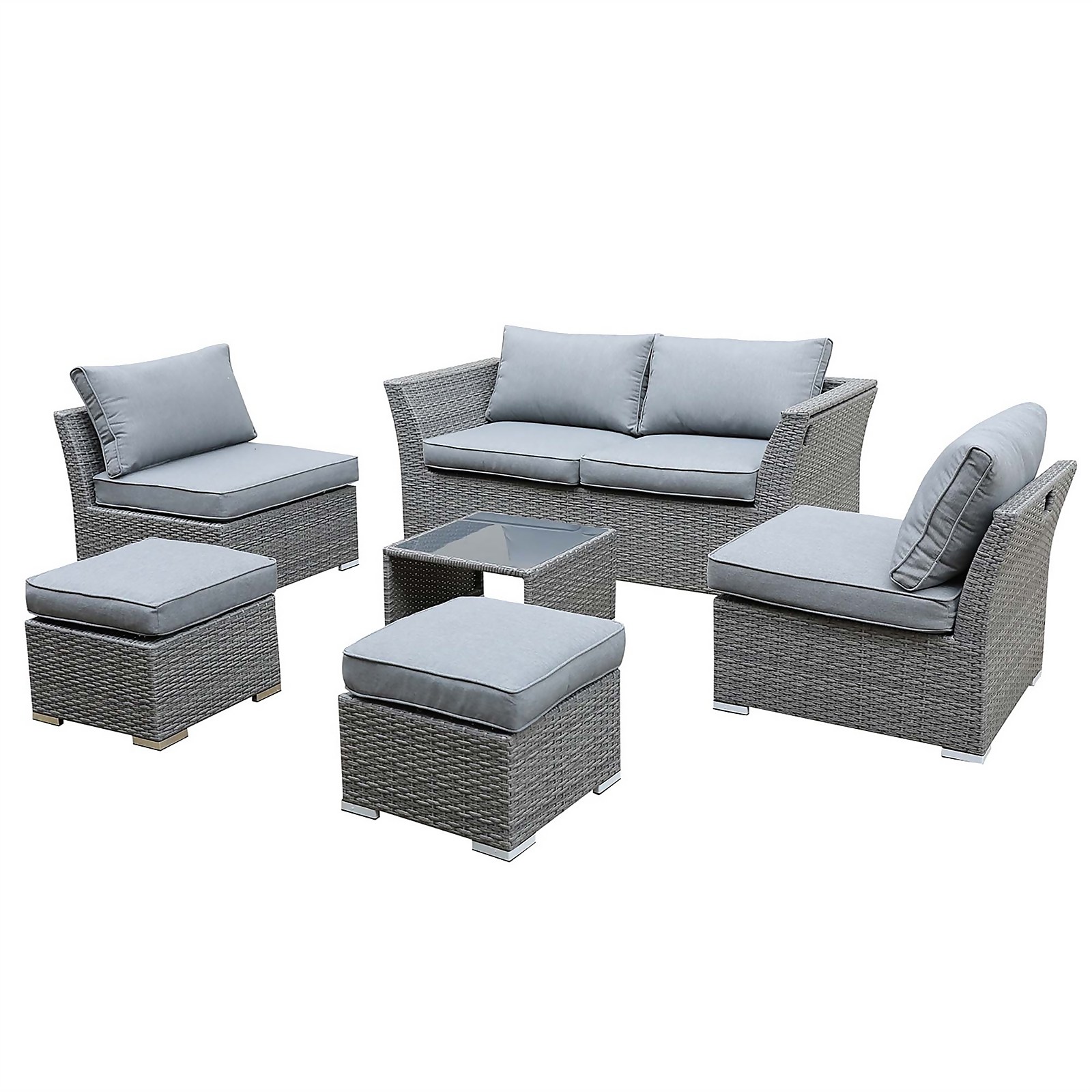Bambrick 6 Seater Grey Garden Sofa Set -579498
Hand woven rattan effect. Toughened glass top. Easy to maintain and clean. Quality Comfortable Cushions. Space Saving Function.
This contemporary set will add a touch of style to a larger garden. The set includes 1 sofa, 1 glass top coffee table, 2 padded stools and 2 chairs. 2 chairs can insert into sofa armrest to keep space saving. all designed in rattan effect. The cushions are removable so you can keep your set safe from the elements. Ideal for larger families and groups.
- Hand woven rattan effect
- Toughened glass top
- Easy to maintain and clean
- Quality Comfortable Cushions
- Space Saving Function
Additional information
| Product Dimensions (H)x(W)x(D) | Sofa – (H)64 x (W)157 x (D)75cmChairs – (H)60 x (W)66 x (D)74cmTable – (H)30 x (W)50 x (D)50cmFootstools – (H)26 x (W)45 x (D)45cm |
|---|---|
| Dimensions Of Sofa (H)x(W)x(D) | (H)64 x (W)157 x (D)75cm |
| Dimensions Of Chairs (H)x(W)x(D) | (H)60 x (W)66 x (D)74cm |
| Dimensions Of Footstool (H)x(W)x(D) | (H)26 x (W)45 x (D)45cm |
| Dimensions Of Table (H)x(W)x(D) | (H)30 x (W)50 x (D)50cm |
| Number Of Seats | 6 |





Reviews
There are no reviews yet.